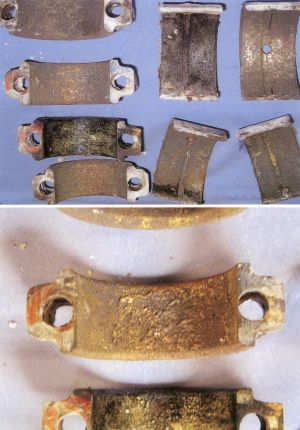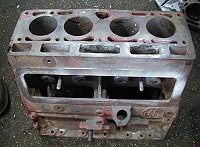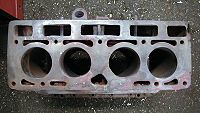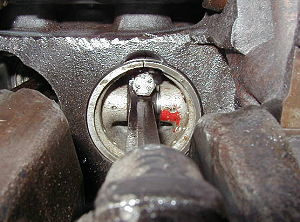
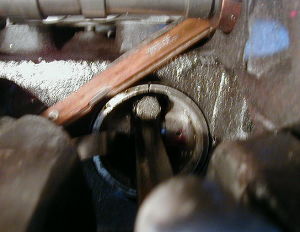 Pistons being forced against the bores. |
When the big end caps were slackened off the engine turned over easily, when two of them were retightened the pistons were forced against the bore, this was the main reason for the engine being tight. When it was further stripped down it was found that the con rod bolts instead of being 10mm in diameter they had been made out of 3/8" diameter bolts these were then .010" down and therefore allowing the big ends to float. An oil groove had been missed out at the flywheel end of the crankshaft journal, this meant that the oil that would have been fed through to the clutch would not have done so, this would mean that as the clutch is a "wet one" it would not have been lubricated and would have burnt out. But as the engine would have seized up because of the two tight big ends by then; that would have paled into insignificance.
The long and short of this is that the block, journals and big end would have to be re-metalled. As Holden Engineering apparently are no longer trading I took it to Coventry Metalling and Boring, there it was checked by Graham Walker who confirmed what by now I had indicated to me. The workmanship was in the words of Graham "Not of the quality required to do the job" or words to that effect. Where the problem with the tight big ends had been addressed it showed signs of having been scraped, filed and emery clothed. The edges of the big ends where they come together were no longer clean and therefore oil tight but 'feathered' and would therefore allow the oil to escape with a subsequent loss of oil and therefore pressure another reason why the engine would not have lasted 100 miles as that is what I had been informed by both my engine re-builder and the company now entrusted to do the job.
